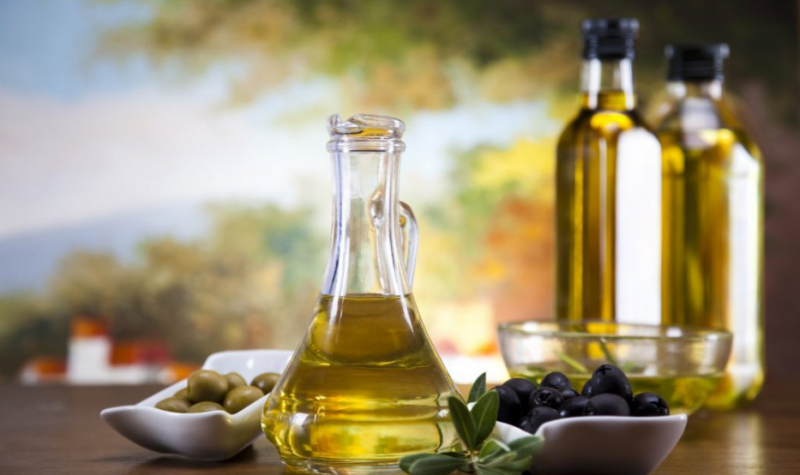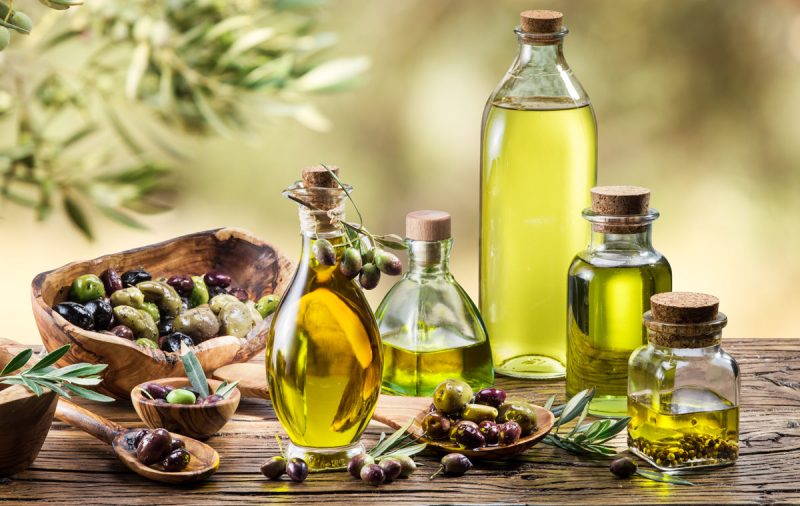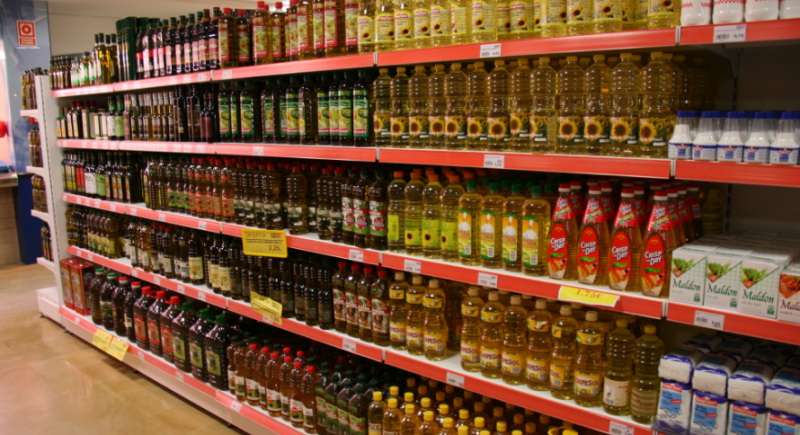Residents of the middle strip have many problems with the choice and use in cooking of this healthy Mediterranean product. More often than others, the question is how to choose olive oil, and what features should be considered when buying. The answer options depend on the specific situations and financial capabilities of the liquid gold consumers.
Material Content:
Olive oil classification
European olive - the oldest cultivated plant, a symbol of the warm Mediterranean with its cuisine, prolonging youth and life itself. Oil from these fruits in ancient times was called "liquid gold." The categories of such a food product differ in the method of production, quality and purpose of use.
- Virgin category (translated from Latin - “virgin”). This is the class of the best and highest quality olive oil obtained as a result of the first cold pressed fruits. “Virginity” is provided by the methods of collecting and processing olives according to ancient technologies, without chemistry.
Only by mechanical extraction can you get Virgin natural olive oil.
- Variety Extra Virgin. A product whose acidity does not exceed 1%. For 1 liter of "extravagant" olive oil, you will have to pay more than 900 rubles. This cost is about 20 bottles of sunflower oil produced in Russia.
- There are other varieties: Fine virgin and semi-fine virgin. “Beautiful virgin” and “semi-perfect virgin” olive oil are distinguished from each other by the most important characteristic for the product - acidity. The value of the indicator is influenced by the grade of olives or the ratio of different varieties in the mixture, the time of harvest, the temperature of the extraction.
- Just Virgin.It is also a high quality unrefined olive oil, obtained without the use of chemicals. The difference is that the acidity of the product is higher - up to 2%. Olives can be of the best varieties, but overripe or unripe, collected on time.
- Olive oil (Pure, Rafined, Light) is a lower quality category of olive oil compared to Virgin. This is most often labeled as a mixture of a natural and refined product. Refined indicates that the oil is refined. Cleaning leads to the almost complete disappearance of Virgin's aroma and taste.
- Pomace. Olive oil obtained from what remains after the first squeeze of the fruit (oilcake, squeeze). The residues are subjected to heating, mixed with chemical solvents to completely extract the oil. The cost of such a product is 4 times lower compared to Extra virgin. Pomace grade oil can be used to grease baking dishes. In the Mediterranean countries, this is not a particularly sought after product. Manufacturers are cunning: they add a small volume of natural Virgin to the refined oil of the lower class to improve the taste.
In addition to the words Extra virgin, manufacturers of vintage olive oil print the abbreviations PDO or PGI against a blue circle. This is a distinctive symbol of "liquid gold", released in the European Union. This marking is used for oil produced according to an old recipe from special varieties of olives grown in a particular region.
In Spain, second-class olive oil is called Orujo, which means “pulp” and corresponds to Pomace. This oil is not recommended for salad and for frying. Pomace and Orujo come to the Russian counters in large quantities.
Lampante - olive lamp oil. It is not a food product used for processing or for industrial needs.
How to choose a quality product
It is necessary to decide in advance: to buy oil for salads or for frying. In both the first and second cases, you need to look at the marking, the date of manufacture. If you need a dietary product for a child, a sick person, it is better to purchase an unrefined Virgin class.
Only olive oil produced by cold pressing helps prevent atherosclerosis, is used for diseases of the liver and gall bladder, for infant feeding. It is useful in old age.
For frying
A good olive oil for this purpose is Olive oil (Pure, Rafined, Light). Usually this is Virgin grade refined oil whose acidity does not meet the high requirements of the EU. Purification leads to a loss of “olive” taste, so manufacturers add cold-pressed oil and get a mixture. Refined olive oil is more transparent compared to Virgin, has a yellowish color, and not greenish.
Such a product is considered less beneficial to the body. However, after refining, fewer substances remain that undergo oxidation at high temperatures and give carcinogenic compounds.
Many are mistaken in considering Extra Virgin Oil a salad dressing-only product. Of course, refined is cheaper, and the purchase of such oil can significantly save, but meanwhile, high-quality unrefined olive oil is also suitable for preparing hot dishes. It is advisable to use it at temperatures up to 180 ° C. An oven and microwave can support these conditions.
For salad
Extra Virgin olive oil is added to the prepared dishes. Its tart taste and light bitterness at first seem unusual, but eventually find their fans. You can add Greek salad with such oil, add it to the usual salads of cucumbers, tomatoes and onions, in olivier.
Mediterranean cuisine is characterized by such a technique as aromatization of oil with garlic, herbs. Such a product is both tasty and healthy.
Olive is replaced with butter in vegetable puree, sunflower - in pastry dough. When cooking pasta add 1 tsp. oil in boiling water.Olive is combined with pickled mushrooms, fish, suitable for sauces, homemade mayonnaise.
The best countries producing natural oil
The ancient Russian name for olive oil is Provence. Now this French-made product in Russian stores is not only rare, but also sold at "sky-high" prices. More often you can find natural olive oil from Italy, but it is also not cheap. Russian experts investigated olive oil supplied by various brands.
Experts have found that the products of the companies meet all the requirements:
- Borges, Guillen, Altero, Maestro de Oliva (Spain);
- Terra di Bari, Monini (Italy);
- Hellada (Greece).
The quality of Terra Delicca oil from Tunisia is slightly lower.
Extra virgin olive oil is tasty and healthy, regardless of manufacturer. Although each region has its own varieties of olives, there are specifics of production. For example, in Tunisia produce a more tart product, compared with Spain. Italian producers of high-quality oil are trying to maintain a low level of acidity (less than 0.8%). This product has a light fruity aroma, spicy, slightly bitter taste.
Affordable prices for Pomace, also sourced from EU countries. Unfortunately, in the product description, Russian suppliers are deceiving customers: "Pomace high-quality olive oil in plastic bottles." “Oilcake” oil is given out as “virgin”, a low-quality product is called high-quality.
What to look for when buying
The right choice of oil will help knowledge of certain criteria.
- First of all, Extra virgin or just Virgin is the best olive oil. If the product comes from EU countries, the label will have a round blue badge and an EU symbol. The manufacturer, exporter must also be indicated.
- The acidity of quality olive oil is below 1%.
- Color - saturated yellow, without flakes and sediment. Olive oil is usually sold in bottles of dark glass, so you will not be able to see the color right in the store.
- Plastic or metal packaging is used for the cheapest and lowest quality varieties.
- Be sure to see the date of manufacture. The “younger” the oil, the more useful substances are stored in it and the less oxidation products have accumulated. The shelf life of this product is 18 months. However, the most useful substances in the first six months after the release date.
It is interesting:peach oil instructions
You should pay attention to the composition. Producers can add spices, herbs, as is customary in the countries of the Mediterranean basin. There are cheap varieties that are mixed with other vegetable oils. Then on the label add in small print mixed oil or mix. The content of natural olive oil in such mixtures is negligible.

















